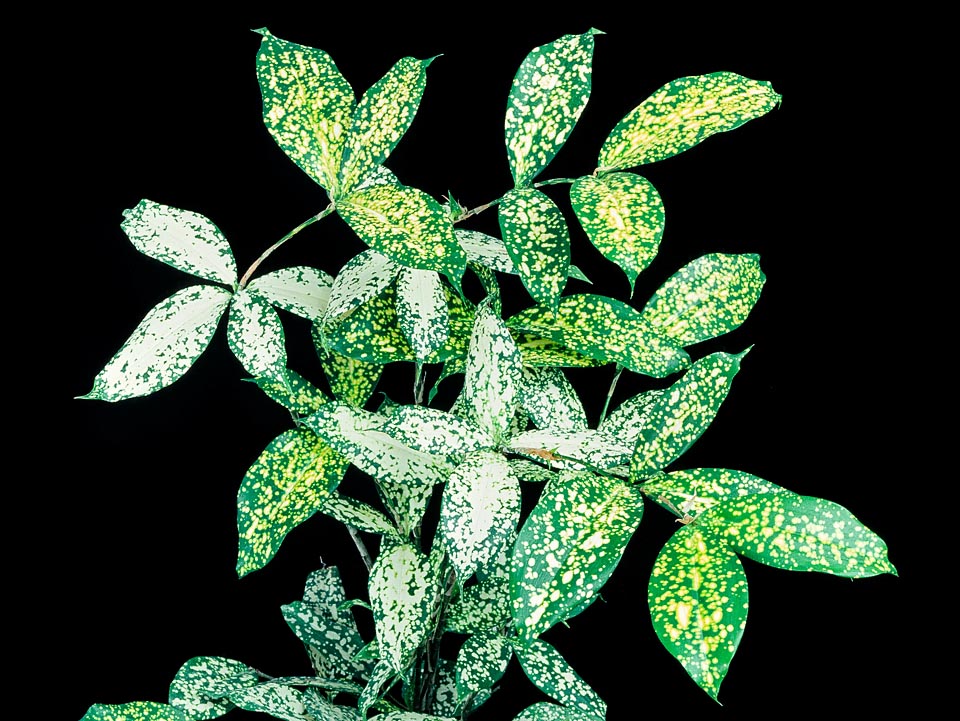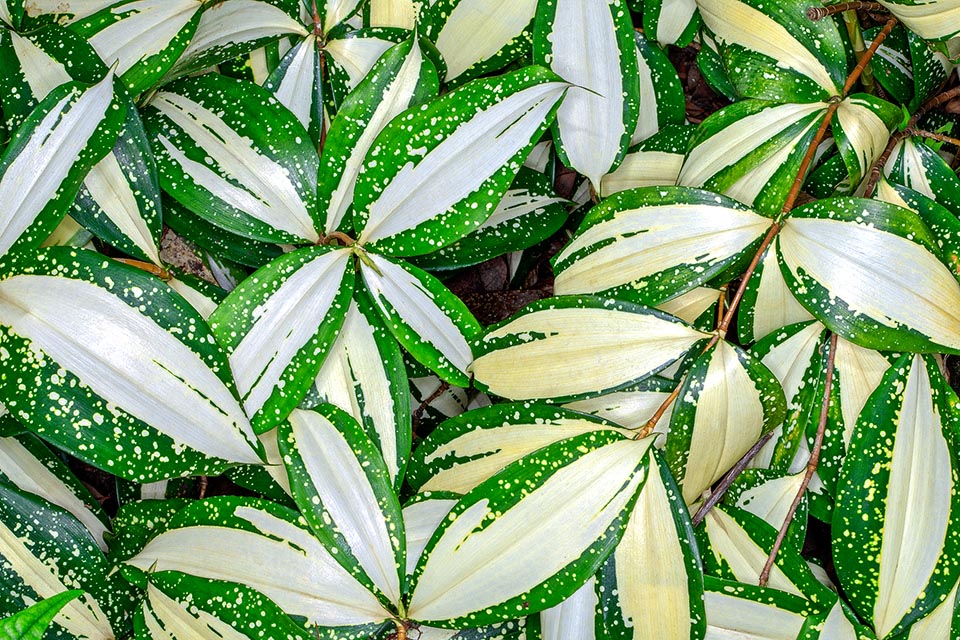Family : Asparagaceae

Text © Pietro Puccio

English translation by Mario Beltramini

The Dracaena sulfurosa var. sulfurosa is native to tropical Africa. Cespitose, with thin stems, erect, winding or hanging, 0,6 to 1,5 m long © Giuseppe Mazza
The Dracaena surculosa Lindl. var. surculosa (1828) is native to tropical Africa (Benin, Cameroon, Ivory Coast, Ghana, Nigeria and Togo).
The name of the genus comes from the Greek “drakàina”, which is the female of dragon; the name of the species comes from the Latin “surculosus” = shooting, with obvious signification.
Common names: “gold dust dracaena”, “gold dust plant”, “spotted dracaena” (English); “Buntgefleckte Drachenlilie” (German); “dracaena manchada”, “dracaena polvo dorado”, “dracena punteada” (Spanish); “dracena-confeti”, “dracena ouro” (Portuguese).
Slow growing, cespitose, evergreen plant, with thin erect stems, winding or hanging at times, 0,6-1,5 m long and three-four opposite or verticillated leaves, of elliptic shape with pointed apex, coriaceous, 6-10 cm long; of a glossy dark green colour with irregular dots of a cream yellow colour tending to the white time passing.

Slow growth, but of sure ornamental interest. Born in the tropical underwood, it adapts to luminous indoors. Here, the odd cultivar ‘Milky way’ © Giuseppe Mazza
The inflorescences are 7-8 cm long with small white flowers, pleasantly fragrant during the night; the fruits are globose berries of about 15 mm of diameter of a reddish orange colour.
Plant of remarkable ornamental value, cultivable in tropical, humid subtropical and warm temperate areas in slightly shaded position, elsewhere to be cultivated in pot, as it does not stand temperatures around the 0°C, and as such is utilized in indoor decoration.
When in a flat, it is to be placed in a very luminous location, but far from direct sun light, it bears also shady positions, but with a loss in the liveliness of the colours; the soil must be draining, in order to avoid rottenness due to stagnations, and should be kept constantly humid, but if it is placed in a poorly luminous or rather cool position, then it is better to reduce the watering. It usually reproduces by division, but also by apical cutting or piece of stem.
Synonyms: Nemampsis ternifolia Raf. (1838); Dracaena godseffiana Sander ex Mast. (1893); Draco surculosa (Lindl.) Kuntze (1891); Pleomele surculosa (Lindl.) N.E.Br. (1914); Pleomele godseffiana (Sander ex Mast.) N.E.Br. (1914).
→ To appreciate the biodiversity within the ASPARAGACEAE family please click here.
